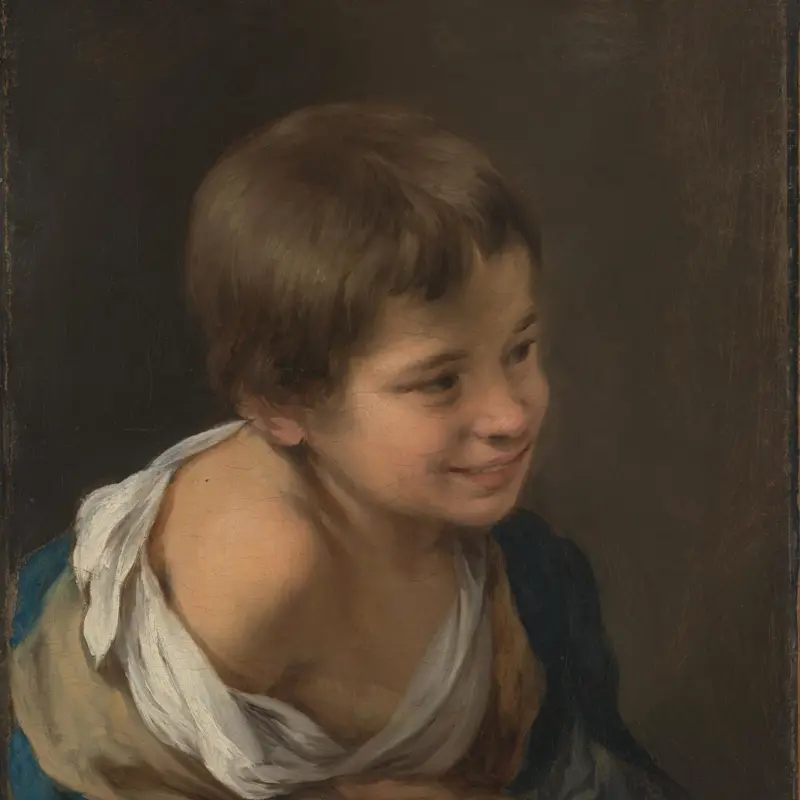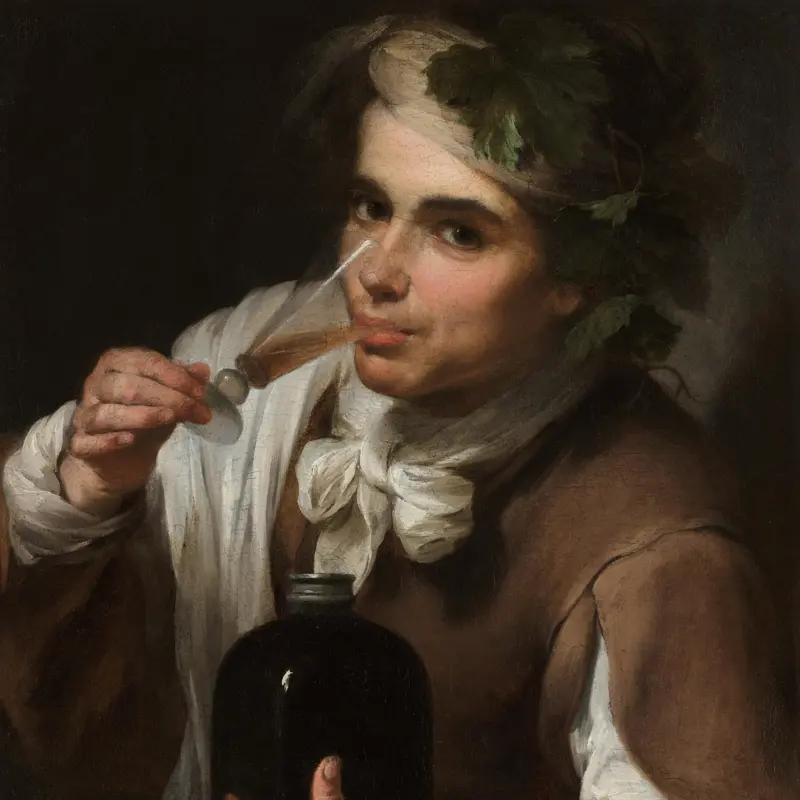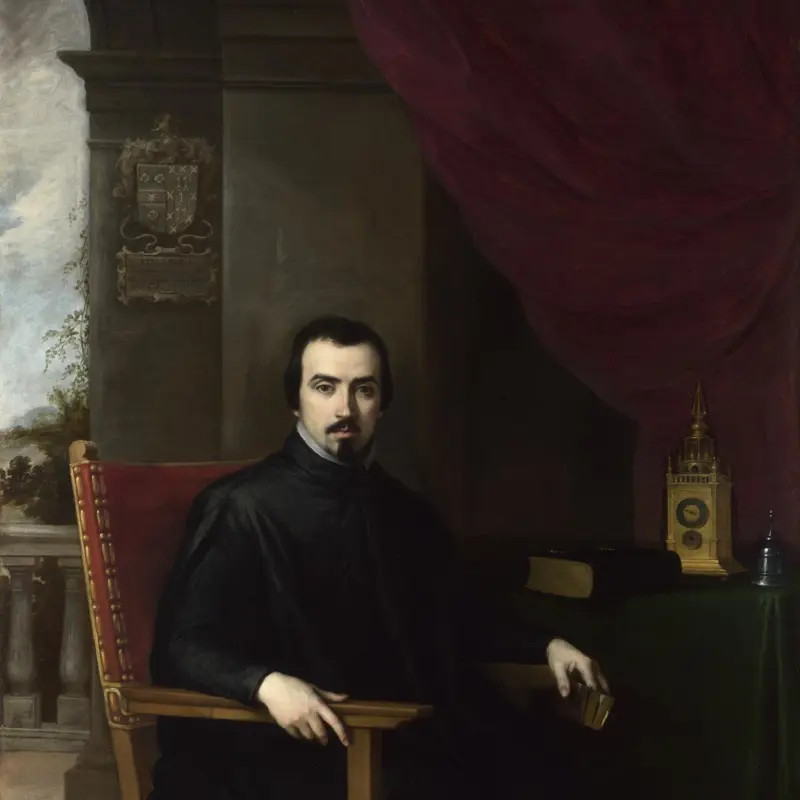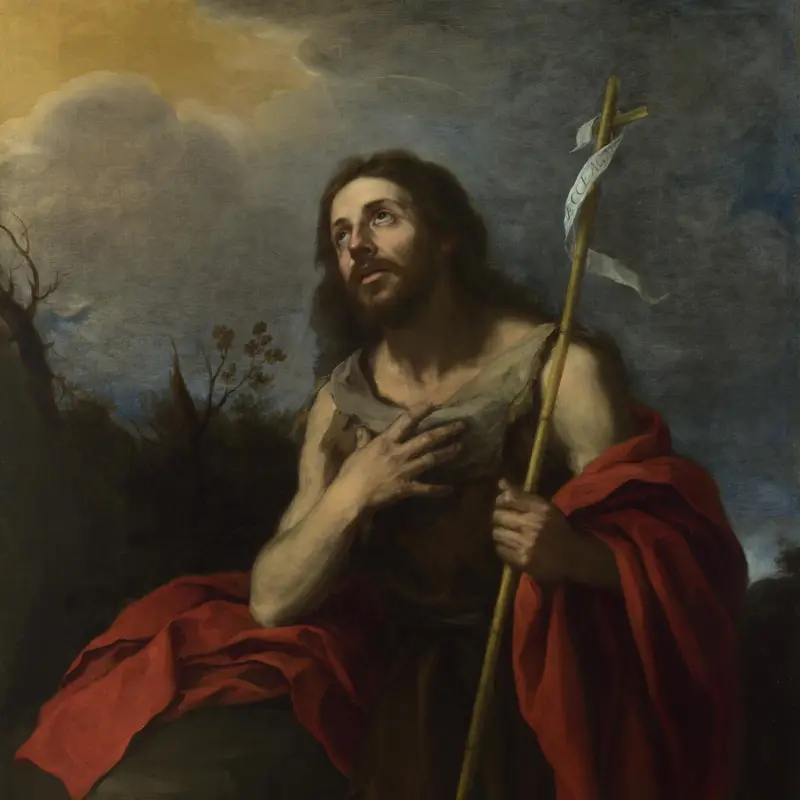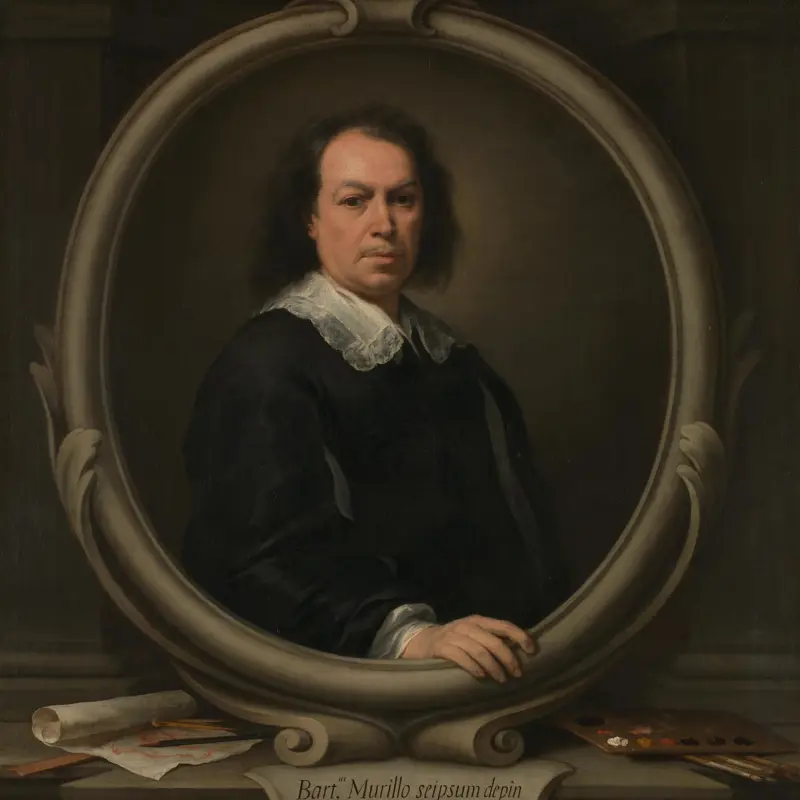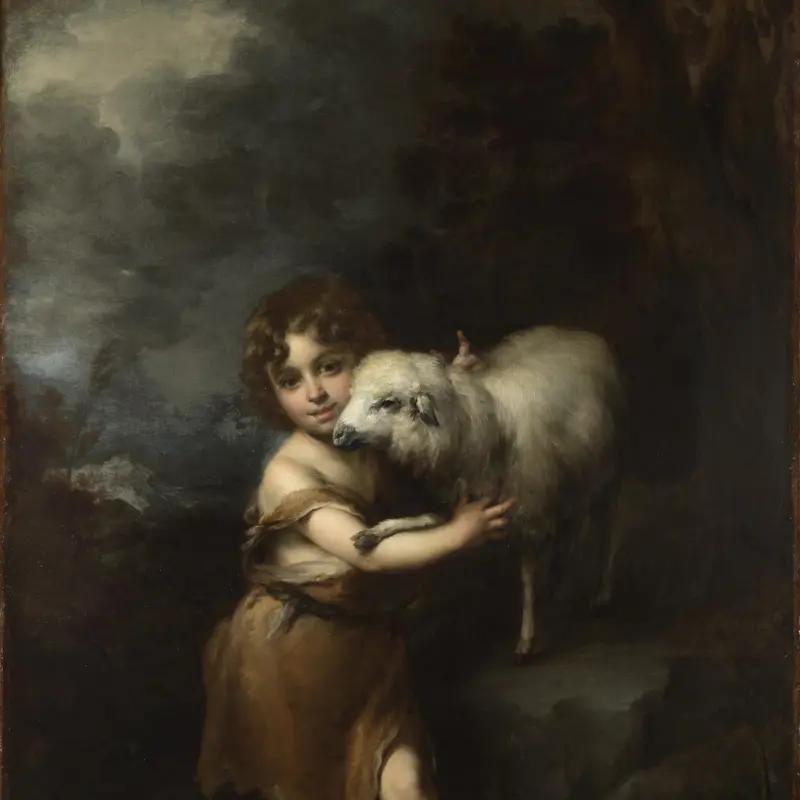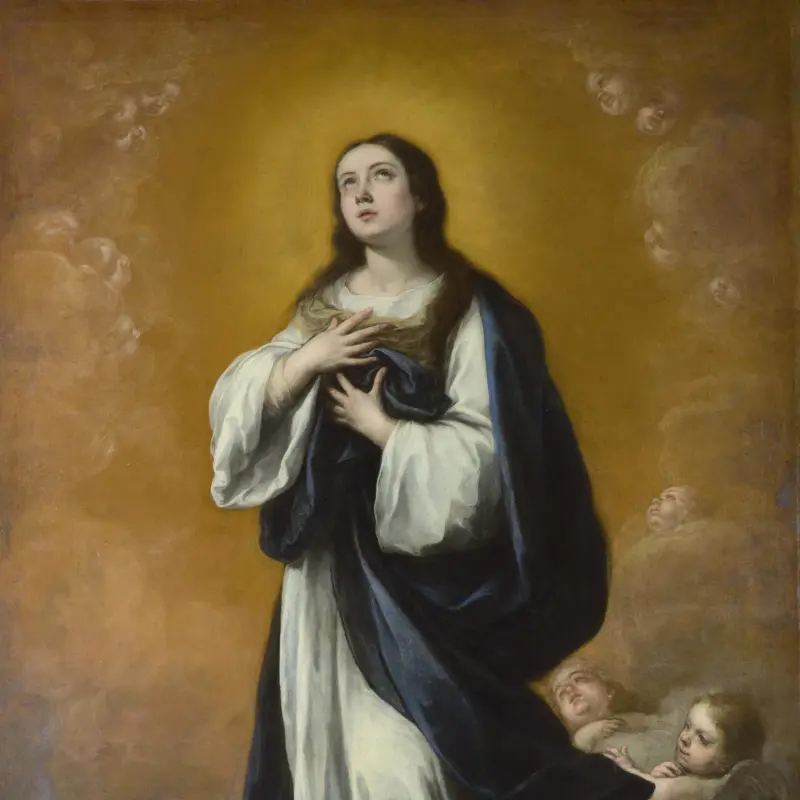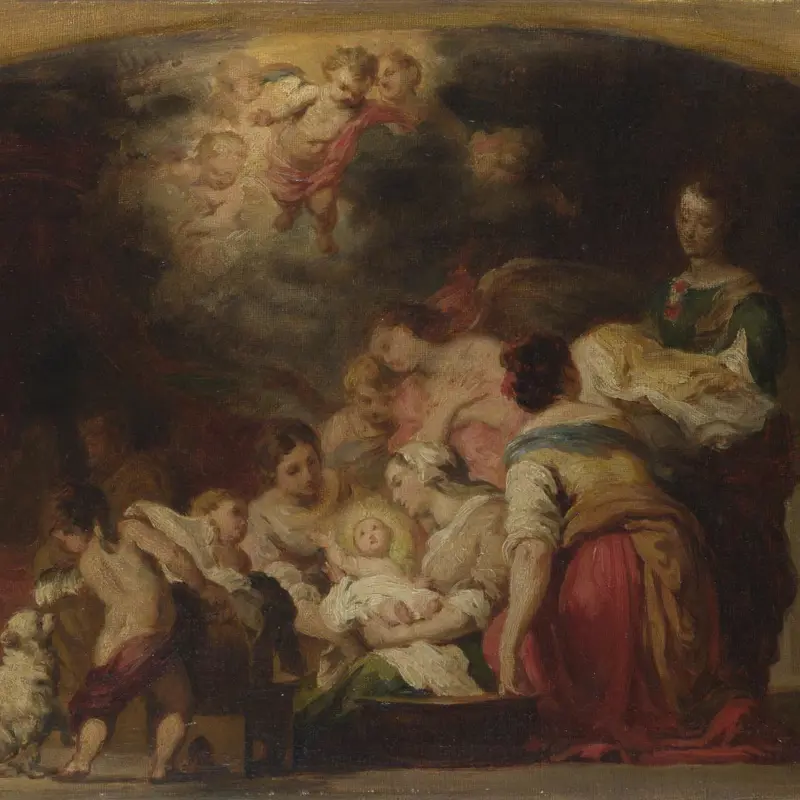Bartolomé Esteban Murillo, 'Christ healing the Paralytic at the Pool of Bethesda', 1667-70
About the work
Overview
This painting shows one of the seven acts of charity described in the Gospel of Matthew and was part of a series that Murillo painted for the church of the Hospital de la Caridad in Seville. The Caridad was a charitable brotherhood dedicated to helping the poor and sick of the city; Murillo himself was a member.
The pool of Bethesda in Jerusalem was periodically visited by an angel, and whoever first touched its water after this would be cured of illness. Christ went to the pool and heard a sick man complain that someone always stepped into the water before him.
Here, Christ invites the man to stand, curing him; their mirrored hand gestures capture the powerful connection between them. The man’s raised arms create an upward motion, as if he is being lifted from the ground by an invisible force – a visual evocation of the miracle taking place.
Key facts
Details
- Full title
- Christ healing the Paralytic at the Pool of Bethesda
- Artist
- Bartolomé Esteban Murillo
- Artist dates
- 1617 - 1682
- Date made
- 1667-70
- Medium and support
- Oil on canvas
- Dimensions
- 237 × 261 cm
- Acquisition credit
- Presented through the Art Fund in memory of W. Graham Robertson, 1950
- Inventory number
- NG5931
- Location
- Room 30
- Collection
- Main Collection
- Frame
- 20th-century Replica Frame
Provenance
Additional information
Text extracted from the ‘Provenance’ section of the catalogue entry in Neil MacLaren, revised by Allan Braham, ‘National Gallery Catalogues: The Spanish School’, London 1988; for further information, see the full catalogue entry.
Exhibition history
-
2009The Discovery of Spain: British Artists and Collectors, Goya to PicassoNational Gallery of Scotland18 July 2009 - 11 October 2009
Bibliography
-
1677D. Ortiz de Zúñiga, Annales eclesiásticos y seculares… de Sevilla, Madrid 1677
-
1772A. Ponz, Viage de España: O cartas, en que se da noticia de las cosas mas apreciables, y dignas de saberse que hay en ella, Madrid 1772
-
1800J.A. Ceán Bermúdez, Diccionario histórico de los mas ilustres profesores de las bellas artes en España, Madrid 1800
-
1806J.A. Ceán Bermúdez, Carta… sobre el estilo y gusto en la pintura de la Escuela Sevillana, Cádiz 1806
-
1824W. Buchanan, Memoirs of Painting: With a Chronological History of the Importation of Pictures by the Great Masters into England Since the French Revolution, London 1824
-
1854G.F. Waagen, Treasures of Art in Great Britain: Being and Account of the Chief Collections of Paintings, Drawings, Sculptures, Illuminated Mss. […], vol. 2, trans. E. Eastlake, London 1854
-
1908Royal Academy of Arts, Works by the Old Masters and Deceased Masters of the British School (exh. cat. Royal Academy of Arts, 1908), London 1908
-
1910C. Phillips, 'Old Masters at the Royal Academy', Daily Telegraph, 1910
-
1917M. Gómez Imaz, Inventario de los cuadros sustraídos por el gobierno intruso en Sevilla, 2nd edn, Seville 1917
-
1932E. Mâle, L'art religieux après le concile de Trente, Paris 1932
-
1952Maclaren, Neil, National Gallery Catalogues: The Spanish School, London 1952
-
1955The National Gallery, The National Gallery: 1938-1954, London 1955
-
1970N. MacLaren and A. Braham, The Spanish School, 2nd edn, London 1970
-
1970J. Brown, 'Hieroglyphs of Death and Salvation: The Decoration of the Church of the Hermandad de la Caridad, Seville', Art Bulletin, LII/3, 1970, pp. 265-77
-
1976F. Haskell, Rediscoveries in Art: Some Aspects of Taste, Fashion and Collecting in England and France, London 1976
-
1978D.T. Kinkead, Juan de Valdés Leal (1622-1690): His Life and Work, New York 1978
-
1980E. Valdivieso and J.M. Serrera, El Hospital de la Caridad de Sevilla, Seville 1980
-
1981D.A. Íñiguez, Murillo. Su vida, su arte, su obra, Madrid 1981
-
1982E. Harris, 'Murillo en Inglaterra', Goya, 1982, pp. 169-71
-
1982M.B. Mena Marqués and E. Valdivieso, Bartolomé Esteban Murillo 1617-1682 (exh. cat. Museo Nacional del Prado, 8 October - 12 December 1982; Royal Academy of Arts, 15 January - 27 March 1983), Madrid 1982
-
1987M. Laskin and M. Pantazzi, Catalogue of the National Gallery of Canada, Ottawa, European and American Painting, Sculpture, and Decorative Arts, Ottawa 1987
-
1987J. López Rey, 'Views and Reflections on Murillo', Gazette des beaux-arts, 1987, pp. 1-34
-
1988Maclaren, Neil, revised by Allan Braham, National Gallery Catalogues: The Spanish School, 2nd edn (revised), London 1988
-
1990J. Brown and R.G. Mann, The Collections of the National Gallery of Art, Systematic Catalogue: Spanish Paintings of the Fifteenth Through Nineteenth Centuries, Washington 1990
-
1993I. Rose-de Viejo, Goya/Rembrandt: La mémoire de l'oeil (exh. cat. Cabinet des Estampes du Musée d'Art et d'Histoire, 8 May - 12 September 1993), Geneva 1993
-
2001
C. Baker and T. Henry, The National Gallery: Complete Illustrated Catalogue, London 2001
About this record
If you know more about this work or have spotted an error, please contact us. Please note that exhibition histories are listed from 2009 onwards. Bibliographies may not be complete; more comprehensive information is available in the National Gallery Library.

